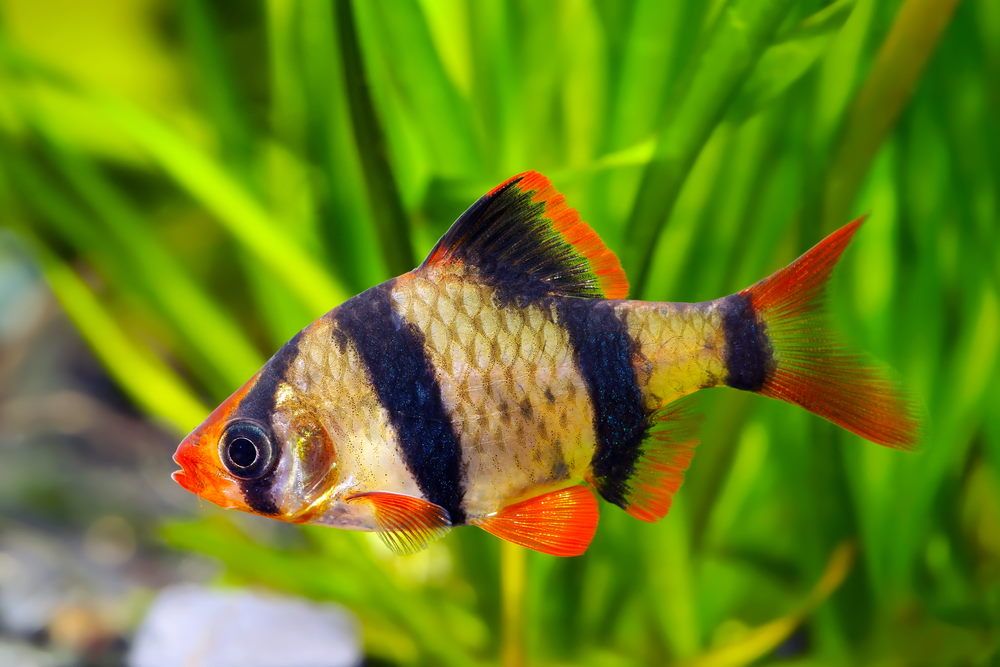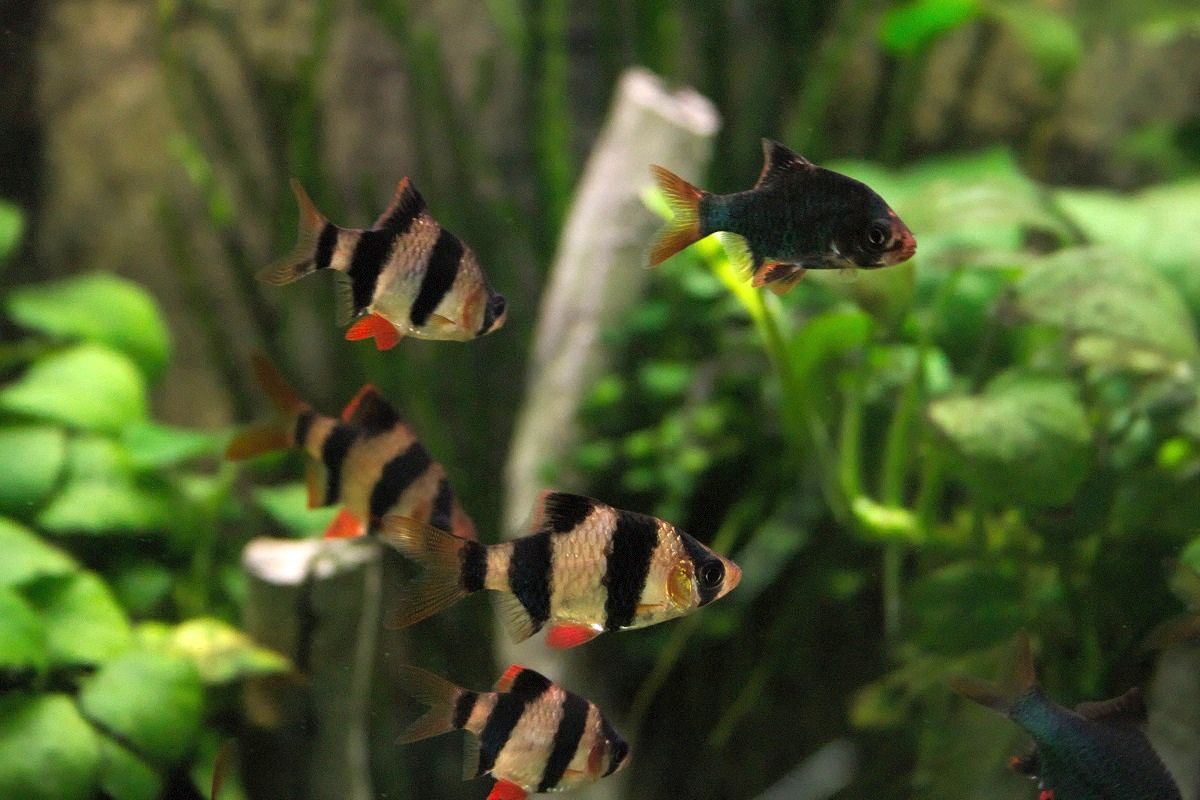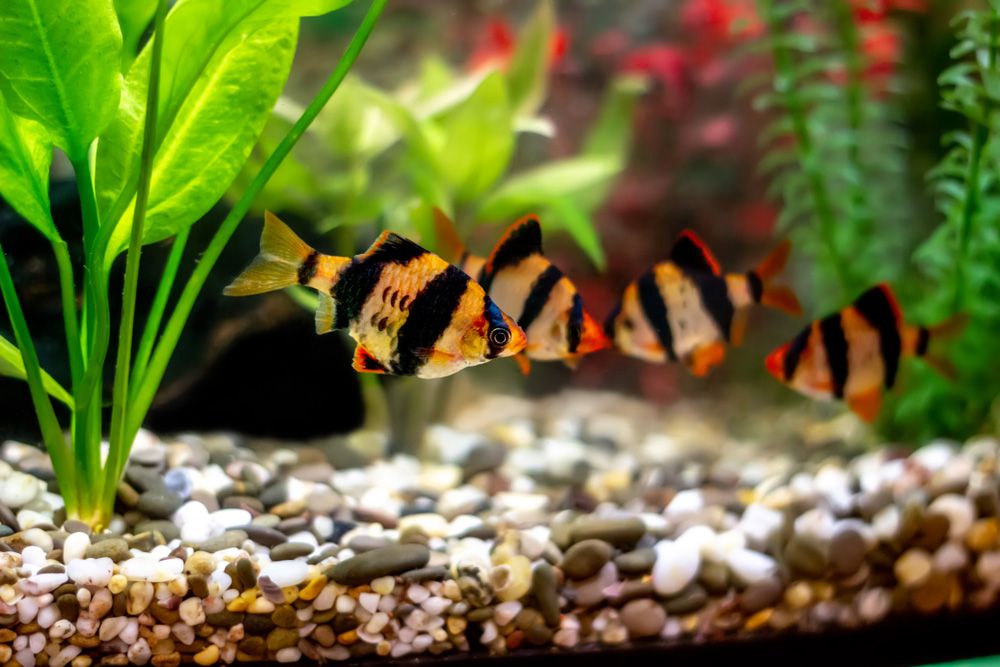Tiger Barb (Puntius tetrazona)
Description:
Appearance:
Body: Small to medium-sized with a slender, streamlined shape.
Color: Bright orange or gold body with distinctive vertical black stripes resembling a tiger's pattern. The colors can be more intense in males, especially during breeding.
Fins: Fins are generally clear or lightly tinted, sometimes showing slight coloration.
Size: Typically grows to about 2.5-3 inches (6.5-7.5 cm) in length.
Behavior:
Activity: Highly active and energetic, often seen darting around the tank and exploring.
Social Structure: Prefers to be kept in groups to exhibit natural schooling behavior, which helps reduce stress and enhances social interaction.
Care Requirements:
Tank Size:
Minimum of 20 gallons (76 liters) for a small group; larger tanks are preferable for more space and to accommodate their active nature.
Water Parameters:
Temperature: 72-78°F (22-26°C).
pH: 6.0-7.5.
Hardness: Soft to moderately hard water.
Filtration: Good filtration is essential to maintain clean water, but avoid strong currents as they can stress the fish.
Tank Setup:
Substrate: Soft substrate like sand or fine gravel is ideal.
Aquascaping: Provide ample swimming space with a well-planted tank. Include plants, driftwood, and rocks to create hiding spots and visual barriers.
Cover: A covered tank is advisable to prevent jumping, as Tiger Barbs can occasionally leap out of the water.
Diet:
Primary Food: Omnivorous; feed a varied diet including high-quality pellets, flakes, and live or frozen foods such as brine shrimp, daphnia, and bloodworms.
Supplemental Food: Offer occasional vegetable matter like spirulina or blanched vegetables to ensure balanced nutrition.
Behavioral Considerations:
Compatibility: Generally peaceful but can be nippy towards fish with long fins or slow-moving species. Best kept with other small, active fish. Avoid aggressive or very large tank mates.
Social Behavior: Thrives in schools of 6 or more. They may become stressed or less active if kept alone or in very small groups.
Tank Maintenance:
Water Changes: Perform regular water changes (20-30% weekly) to maintain water quality and prevent the buildup of toxins.
Cleaning: Regularly clean the tank and remove any uneaten food or waste to maintain a healthy environment.
Health Care:
Observation: Monitor for signs of stress or illness, such as changes in behavior, loss of appetite, or visible symptoms like spots or lesions.
Treatment: Ensure optimal water conditions and consult an aquarium professional if any health issues arise.





